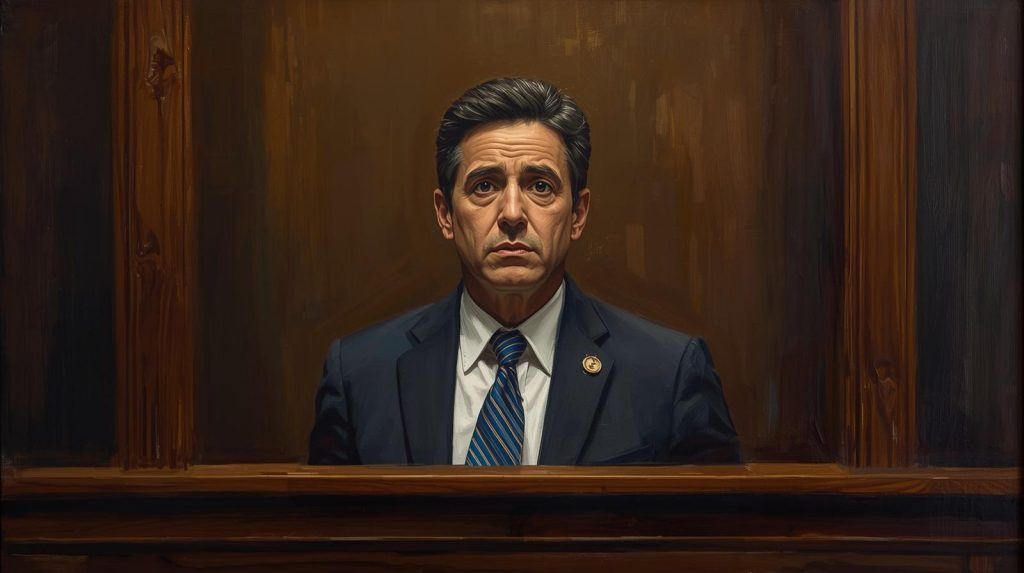Despite Terry Brooks’s assertion that “there was hardly any difference at all” between practicing law and writing fantasy novels, my experience as someone who moonlights as a fiction writer is that there is seldom interest in newly published judgments from writers, or any type of artists at all. However, that may not be true of Alalääkkölä v Palmer [2024] NZCA 24, a dispute that has caused concern within the creative community.
At its heart Alalääkkölä v Palmer deals with the question of whether copyright can be considered relationship property, and therefore divided equally at the time of a separation. Ms Alalääkkölä is an experienced painter, who married Mr Palmer in March 1997. For their 20-year marriage, Ms Alalääkkölä continued to paint and sell her artworks to provide the main source of income for the family. When the couple separated in 2017, the question of ownership in the copyright of Ms Alalääkkölä’s paintings was raised. The Family Court originally found the copyright was separate property.[1] The High Court overturned this finding, instead ruling it was relationship property. Ms Alalääkkölä appealed this judgment.[2]
Copyright is property, that’s final
The first issue the Court of Appeal considered was whether copyright was “property” for the purposes of the Property (Relationship) Act 1976 (“PRA”).
Ms Alalääkkölä attempted to argue that copyright was not something that could be considered property as defined by s 2 of the PRA. Her arguments were varied, including that copyright is best understood as a bundle of rights and interests that had to be assessed individually, that it is an intangible and purely negative right that exists only to control the author’s expression of their talent, and that the copyright is a result of Ms Alalääkkölä’s own personal artistic skills and attributes, and cannot be seen as property of the relationship.
The issue with the approach taken by Ms Alalääkkölä is that it is in direct conflict with what the Copyright Act 1994 itself says about copyright. The Court of Appeal noted that:
- Section 14 of the Copyright Act clearly states that “copyright is a property right”;[3]
- While copyright may be a “bundle of rights”, these rights are not separate or standalone rights, but arise from the specific statutory rights granted to a copyright owner under the Act, i.e., the exclusive right to copy the work or issue copies of it to the public;[4] and
- The Court of Appeal had previously found that “copyright is a sui generis form of “personal property”.[5]
Quoting James & Wells’s own Intellectual Property Law in New Zealand,[6] the Court of Appeal affirmed the principle that “the law recognises the rights arising out of intellectual property are property rights”. The Court therefore ruled that copyright does fall within the definition of property in s 2 of the PRA.
Artists are no exception to principle of equal sharing
The second question the Court addressed was whether copyright was separate property or relationship property under the PRA.
The approach to separate or relationship property is, to the layperson,[7] relatively straightforward. Relationship property is essential family items, such as the family home, all jointly owned property, and any property acquired during the relationship.[8] Separate property meanwhile can be categorised under three distinct types: property acquired before or after the relationship, gifts or inheritances, and heirlooms, taonga and gifts from the other partner.[9] As the Court stated at paragraph [31], the principle underpinning this approach is that not all contributions to a relationship are financial, and the PRA should recognise the equal contributions of both parties to a relationship when providing for a division of property. Therefore, property is shared equally unless there are extraordinary circumstances.
When approaching the question of copyright, the Family Court had found it to be separate property because it had been created from skills that Ms Alalääkkölä developed prior to the relationship. The High Court considered this a conflation of the skill giving rise to the property right, and the property itself. While the skill may have been developed prior, the copyright itself was created during the relationship. It was therefore relationship property. Again, Ms Alalääkkölä’s arguments before the Court of Appeal were varied, including that her skills were acquired before the relationship, part of the copyright was her ability to commercialise her work after the relationship, and that the Copyright Act itself states she was the first owner.
The Court of Appeal was unconvinced. In particular:
- The Court agreed with the High Court that Ms Alalääkkölä’s artistic skills and her copyright were two distinct and different concepts that should not be conflated.[10] Nor should artistic skills be treated any differently from any other skill. The PRA stands for the principle that partners contribute equally to a relationship, and one partner doing household or childcaring work may allow the other to pursue their artistic endeavours.[11]
- It was circular logic to claim that future commercialising of the copyright after the relationship proved copyright was separate property, since it presupposes that the copyright was in fact separate property that Ms Alalääkkölä was free to commercialise without hindrance after the relationship.[12]
- Copyright is no different to any other property right insomuch that it may be owned by only one spouse, and may be transferred or sold, unless and until there is a transfer of copyright pursuant to a court order or agreement of the parties when it comes to dividing relationship property.[13] If one considers a car owned by one spouse, there is no difficulty in understanding that car is owned by that spouse and can be disposed with as they wish, up until there is a separation and a division of property, and that any proceeds that result from any sale will become relationship property. Copyright, while intangible, is no different.
- The Court also considered two American cases that had considered similar issues. While noting that there were differences in the American approach, and therefore the cases were not directly applicable, the Court found it “instructive” that both cases rejected the concept that copyright was not relationship property.
The Court concluded that the copyright was clearly relationship property.
Successful landing at rational outcome
The final issue then for the Court of Appeal was how the copyright should be treated under the PRA. Ms Alalääkkölä wanted to retain ownership of the copyright, whereas Mr Palmer considered he was entitled to half and that half should therefore be transferred to him.
The Family Court had already indicated that even if copyright was relationship property, it had no intention to transfer a share to Mr Palmer since it anticipated this would only lead to further conflict and risk undermining Ms Alalääkkölä’s work. The High Court, even in finding the copyright was relationship property, noted (in what should have been large blue neon font to Ms Alalääkkölä) that the Court’s discretion in how to arrive at equal sharing was a broad one, and it did not necessarily require the transfer of the copyright itself.
The Court of Appeal followed both decisions’ route of travel, arriving at what I believe is a rational and reasonable outcome. It noted:
- Ms Alalääkkölä had raised concerns as to Mr Palmer having some share of the copyright, since this would affect both the personal nature of her artwork, allow it to be distributed without her approval, and potentially lead to a flooding of prints of her work that she would then have to compete against.[14]
- The purpose of the Copyright Act is to promote creativity and to grant exclusive control of their works to authors, artists, and other creators, including “the ability to control the output of their creativity”.[15]
- It was important that, where possible, the division of property under the PRA should reflect the unique nature of copyright, especially where the rights are personal in nature.[16]
- Ms Alalääkkölä should therefore have the right “to choose if, when and how to commercialise” the copyright of her works,[17] which included the ability to control her reputation as an artist which could have been negatively impacted by business decisions from Mr Palmer.[18]
It was clear to the Court that it would be inappropriate to transfer ownership of any copyright to Mr Palmer. This would also prevent any future source of conflict that could arise from Ms Alalääkkölä asserting her moral rights in copyrights, which are inalienable and therefore would not be assigned to Mr Palmer.[19]
The Court therefore concluded that Ms Alalääkkölä should retain ownership of the copyright, but the value of that copyright must be included in the overall pool of the relationship property which would be divided equally, i.e., Mr Palmer would “receive a compensatory adjustment from other relationship property to ensure an equal division of relationship property”.[20]
If in doubt, get thee to a relationship property lawyer
So, where does the Court of Appeal’s decision leave us? Ultimately, at the only possible destination that we could have ended up at. Copyright is uncontestably a property right. Finding that copyright was separate property would have drastically undermined the PRA’s approach to equal sharing. For example, every jilted doctor, lawyer and accountant could then have argued that, since they acquired their degrees and relevant skills prior to any relationship, their property arising from their career should be treated as separate property.
The question arises then, if this is the only rational outcome, what is the controversy in the decision, and why has it sparked such interest from creatives where other copyright decisions have not? Straddling both worlds, I suggest the following.
On the one hand, copyright is often, as recognised by the Court of Appeal, an intensely personal property right. It is a right that has emerged from artistic expression and is concerned with the ability to control how your work is distributed. Terry Pratchett, upon his death, instructed for the hard drives his unpublished works were on to be run over by a steamroller to ensure that even posthumously he maintained control over what was shared with the world. Many authors, artists and creatives feel this almost parental instinct for their work and the desire to protect it.[21] The Court of Appeal was correct to acknowledge that in ruling that the copyright should not be transferred to Mr Palmer and, while this decision was phrased as being one very much in the specific circumstances, I hope a similar approach will continue to be taken by the courts in the future.
On the other hand, the PRA’s approach to equal sharing can seem ill-equipped to deal with the realities of creative endeavours. Many authors and artists have other, full-time jobs, and their creative endeavours are pursued in snatches of spare time wherever it can be found. If one spouse decides to spend their time in the evening reading or listening to music, and the other spouse spends their time writing books or composing songs, it seems uncomfortable at an instinctive level to say the other partner is entitled to equal sharing where there may otherwise be an equal contribution to the relationship, especially where there are no children, or an unequal contribution that favours the creative partner.
Regardless, the Court of Appeal’s decision in Alalääkkölä v Palmer was the right one under our current laws, and the most appropriate one. Unless the PRA is changed, this is the world we live in. If, as a creative person, you have concerns over this you must get yourself to a relationship property lawyer to discuss contracting-out agreements that exclude your copyright from the PRA, or to throw yourself on the altar of “exceptional circumstances” in arguing against equal sharing.[22]
Note: “No Children” is a phrase often found on precedent documents for divorce papers in the United States of America, and is the inspiration behind the title of what has become a classic divorce anthem by The Mountain Goats.
[1] Alalaakkola v Palmer [2020] NZFC 1635.
[2] Palmer v Alalaakkola [2021] NZHC 2330.
[3] Paragraph [19].
[4] Paragraph [20].
[5] Paragraph [21].
[6] It is always regrettable to have the second highest Court in the land refer to your supervising partner as “the learned author”.
[7] Or even a lawyer who does not practice relationship property law and who confidently opines on the simpleness with of it with no understanding as to any nuance.
[8] Paragraph [33].
[9] Paragraph [34].
[10] Paragraph [42].
[11] Paragraph [44].
[12] Paragraph [47].
[13] Paragraphs [51] and [56].
[14] Paragraph [75].
[15] Paragraph [76].
[16] Paragraph [77]. Engineers and their drawings were provided as an example where copyright may not be so personal. I provide no comment on the merits of this suggestion nor the alleged impersonal relationship engineers have with their drawings.
[17] Paragraph [78](a).
[18] Paragraph [78](c).
[19] Paragraph [78](d).
[20] Paragraph [79].
[21] I do not extend this metaphor to the use of a steamroller.
[22] I myself will do no such thing, since my wife has spent years now listening to me discuss plot points, the nuances of characterisation, and providing hours of unpaid proofreading services and so has more than entitled herself to half of the copyright.










